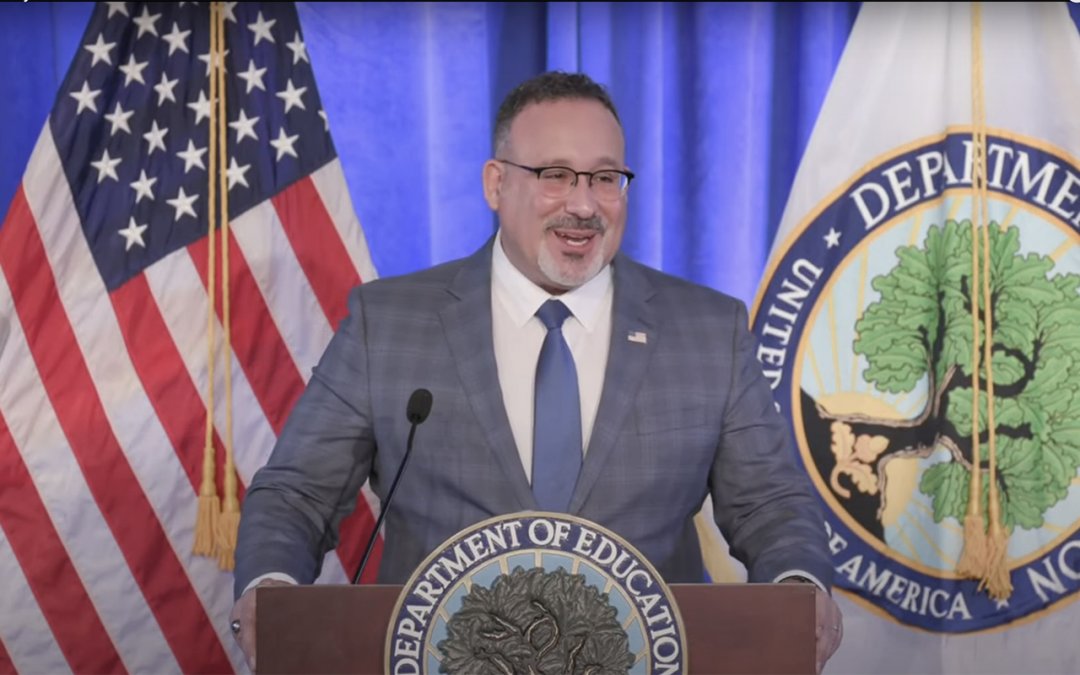WASHINGTON — Supporters of student loan debt relief praised the U.S. Department of Education’s newest proposed regulations that would reduce monthly student loan payments for millions of Americans, but many say it’s only a temporary fix to a bigger problem.
The new proposal makes changes to an existing repayment plan known as Revised Pay As You Earn, or REPAYE, which caps borrowers’ monthly payments to a percentage of their discretionary income.
According to the Department of Education, the current income-driven repayment plan requires borrowers to pay 10 percent of their discretionary income toward their student debt each month; the new plan would lower that to 5 percent.
If finalized, borrowers who make roughly less than $30,600 a year would be eligible for $0 monthly payments – effectively pausing them. Those who do not meet the income threshold could have their monthly payments for undergraduate loans reduced by half.
Additionally, unpaid interest will no longer accumulate if payments are made on time, including for those whose payments have been paused.
“We cannot return to the same broken system we had before the pandemic, when a million borrowers defaulted on their loans a year and snowballing interest left millions owing more than they initially borrowed,” said U.S. Secretary of Education Miguel Cardona in a press call Monday evening.
According to a fact sheet released by the White House last year, 45 million borrowers have more than $1.6 trillion in federal student loan debt.
The proposal was first announced last summer but was overshadowed by the Biden administration’s sweeping student loan forgiveness plan that could relieve eligible borrowers of up to $20,000 in debt. That plan remains on hold as courts examine legal challenges brought forth by Republicans, many of whom argue that it is an abuse of executive power and will harm taxpayers.
Rep. Virginia Foxx (R-N.C.) is one of several Republicans who oppose Biden’s one-time student loan forgiveness plan and has expressed her disapproval of the new plan.
“Expansions of already generous repayment options, institutional shame lists, and other failed policies of the past won’t lower the cost of college for students and families. It does, however, turn the federal loan program into an untargeted grant with complete disregard for the taxpayers that fund it,” Foxx said in a press release on Tuesday.
Sabrina Calazans, managing director at Student Debt Crisis Center, a non-profit organization that helps borrowers navigate loan repayment and advocates for debt relief, said the new proposals for the income-driven repayment plan are helpful, but it needs to go further.
The proposed amendments to the REPAYE plan exclude many parent borrowers, and those who only have graduate school loans will have to continue to pay 10 percent of their discretionary income.
“I think at the end of the day, we need to make sure that borrowers are informed and secure and that they have a chance at contributing to the economy and surviving because it’s millions of families and individuals who are impacted by these decisions,” Calazans said.
The department also plans to compile and publish a list of colleges and universities that leave students with unaffordable amounts of debt in an effort to promote accountability. Institutions with programs on the list will have to submit improvement plans to the Department of Education.
A question that looms is whether the new REPAYE plan will encounter legal challenges alongside the one-time debt relief Biden proposed last year.
Mark Kantrowitz, an expert on financial aid and student loans, said the plan may face legal challenges but is more likely to survive them because the U.S. Department of Education has very broad regulatory authority that allows them to make such changes.
Victoria Jackson, assistant director of higher education policy at The Education Trust – an organization committed to advancing the American education system – said the student debt crisis results from failed policies, and relief is critically important.
“I hope that, you know, policymakers and others around the country realize that proposed changes to income-driven payment plans will help millions of Americans,” Jackson said.
The proposals will go through a 30-day public comment period, but it remains unclear when the new REPAYE plan will officially be available to borrowers.


